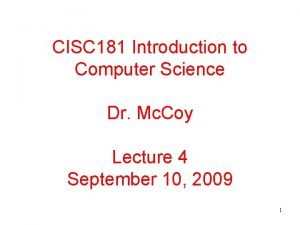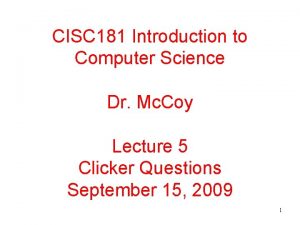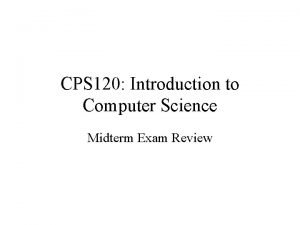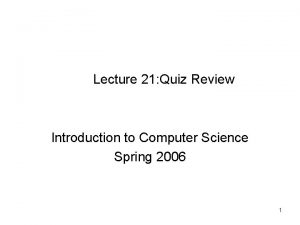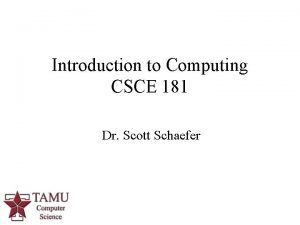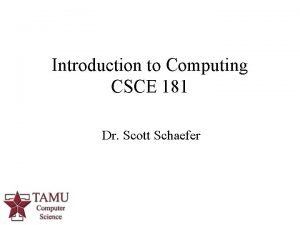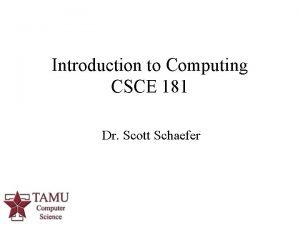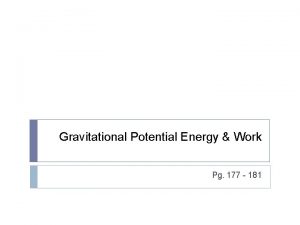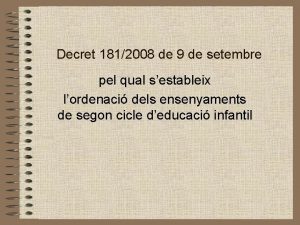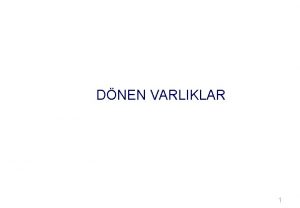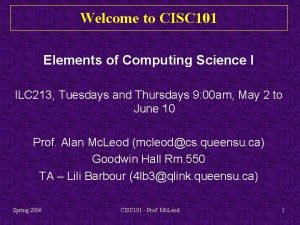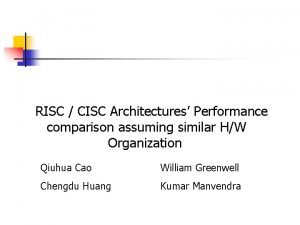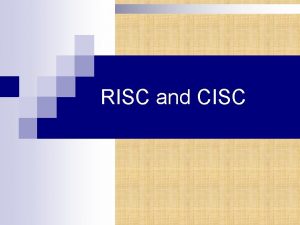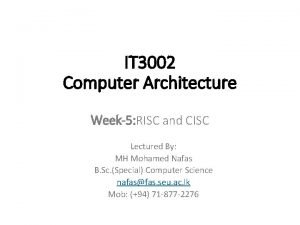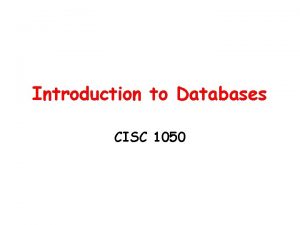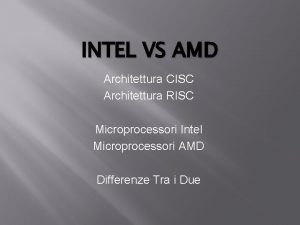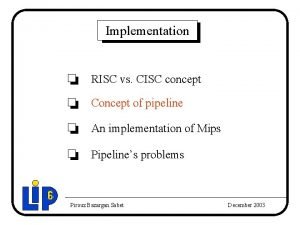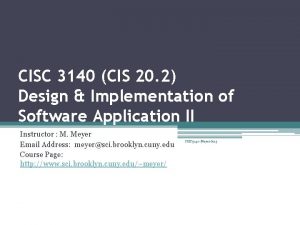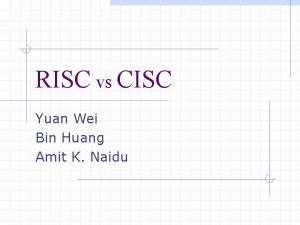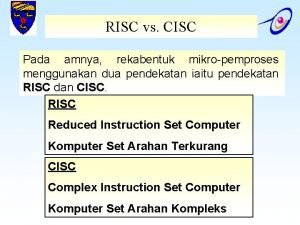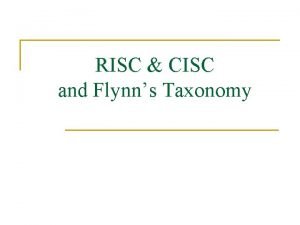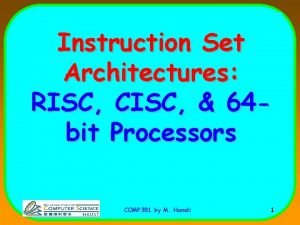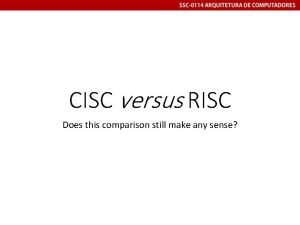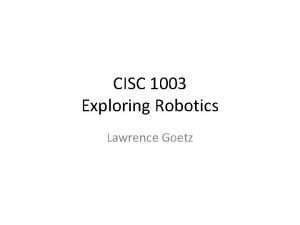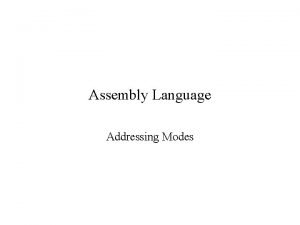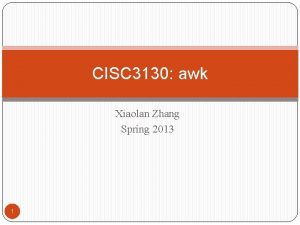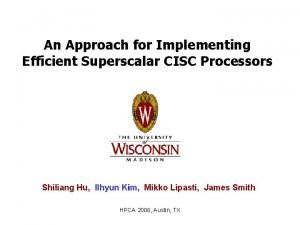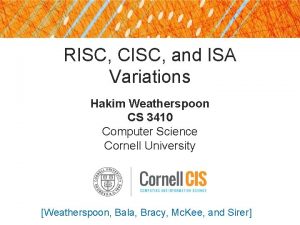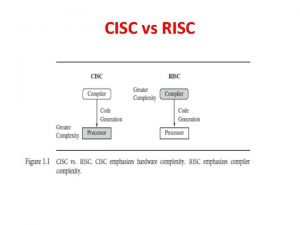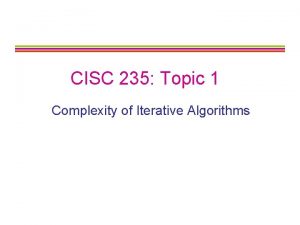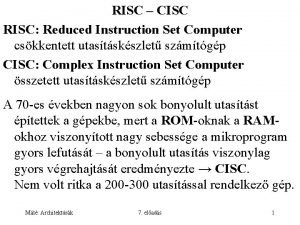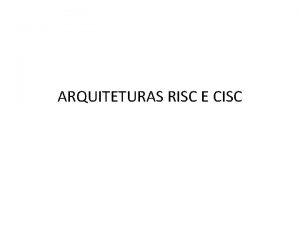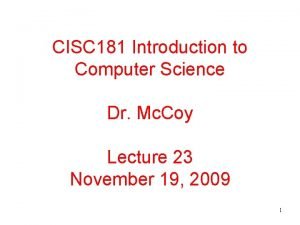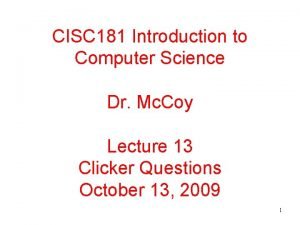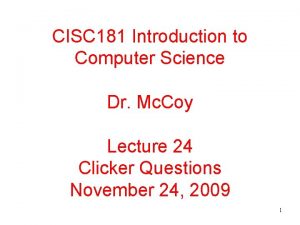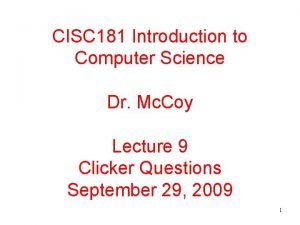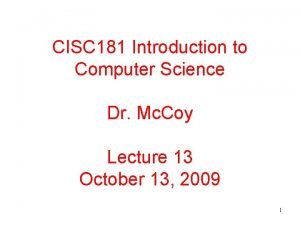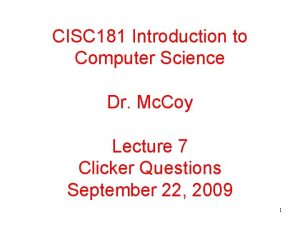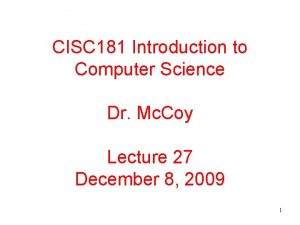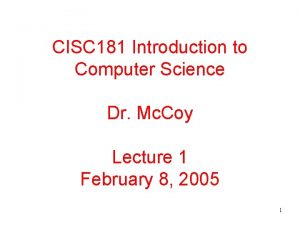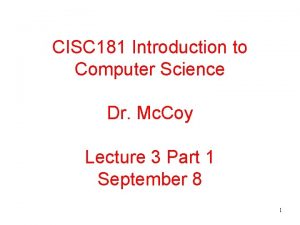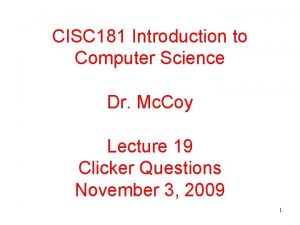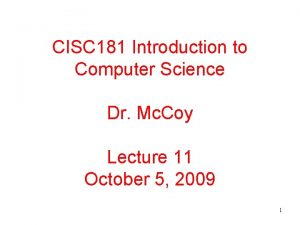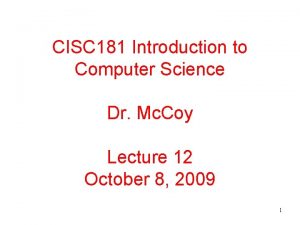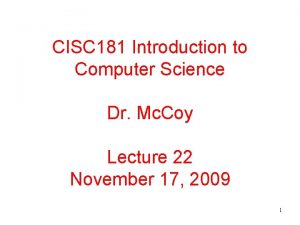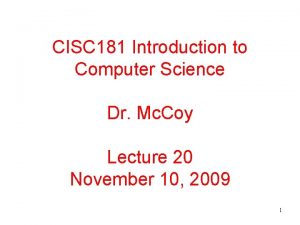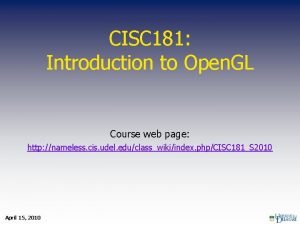CISC 181 Introduction to Computer Science Dr Mc
























![Array b printed with: Array subscript notation b[0] = 10 b[1] = 20 b[2] Array b printed with: Array subscript notation b[0] = 10 b[1] = 20 b[2]](https://slidetodoc.com/presentation_image_h2/63508d25c6a14ae040b0a1a3f943e14f/image-25.jpg)























- Slides: 48

CISC 181 Introduction to Computer Science Dr. Mc. Coy Lecture 15 October 20, 2009 1

Values and Addresses • Consider the following code: int x = 5; int y; y 500000 x 600000 5 • When you say x or y you are asking for the contents of a particular memory location • Note &x= 600000 2

Pointer Variables • We can define variables called pointer variables whose contents are addresses in memory. • int * x. Ptr; – Defines a variable x. Ptr whose contents may be the address of an integer in memory. It is a pointer to an integer • x. Ptr = &x; – Assigns a value to the pointer. • y = *x. Ptr; – * is the derefercing operator – think of as contents of 3

5. 2 4 Pointer Variable Declarations and Initialization • Pointer variables – Contain memory addresses as values – Normally, variable contains specific value (direct reference) – Pointers contain address of variable that has specific value count. Ptr (indirect reference) • Indirection 7 – Referencing value through pointer • Pointer declarations – * indicates variable is pointer int *my. Ptr; declares pointer to int, pointer of type int * – Multiple pointers require multiple asterisks int *my. Ptr 1, *my. Ptr 2; 2003 Prentice Hall, Inc. All rights reserved. count 7

5. 2 Pointer Variable Declarations and Initialization • Can declare pointers to any data type • Pointer initialization – Initialized to 0, NULL, or address • 0 or NULL points to nothing 2003 Prentice Hall, Inc. All rights reserved. 5

6 5. 3 Pointer Operators • & (address operator) – Returns memory address of its operand – Example int y = 5; int *y. Ptr; y. Ptr = &y; // y. Ptr gets address of y – y. Ptr “points to” y y. Ptr y 5 yptr 500000 600000 y 600000 address of y is value of yptr 2003 Prentice Hall, Inc. All rights reserved. 5

7 5. 3 Pointer Operators • * (indirection/dereferencing operator) – Returns synonym for object its pointer operand points to – *y. Ptr returns y (because y. Ptr points to y). – dereferenced pointer is lvalue *yptr = 9; // assigns 9 to y • * and & are inverses of each other 2003 Prentice Hall, Inc. All rights reserved.

What is the Picture? int *i 1 ptr, *i 2 ptr, *i 3 ptr; int a=1, b=2; i 1 ptr = 0; i 2 ptr = &a; i 3 ptr = i 2 ptr; cout << *i 3 ptr << endl; 8

1 2 3 // Fig. 5. 4: fig 05_04. cpp // Using the & and * operators. #include <iostream> 4 5 6 using std: : cout; using std: : endl; 7 8 9 10 11 int main() { int a; int *a. Ptr; 12 13 14 a = 7; a. Ptr = &a; 15 16 17 cout << "The address of a is " << &a << "n. The value of a. Ptr is " << a. Ptr; 18 19 20 cout << "nn. The value of a is " << a << "n. The value of *a. Ptr is " << *a. Ptr; 21 22 23 24 cout << "nn. Showing that * and & are inverses of " << "each other. n&*a. Ptr = " << &*a. Ptr << "n*&a. Ptr = " << *&a. Ptr << endl; Outline fig 05_04. cpp (1 of 2) // a is an integer // a. Ptr is a pointer to an integer // a. Ptr assigned address of a * and & are inverses of each other 25 2003 Prentice Hall, Inc. All rights reserved. 9

26 27 28 return 0; // indicates successful termination Outline } // end main fig 05_04. cpp (2 of 2) The address of a is 0012 FED 4 The value of a. Ptr is 0012 FED 4 fig 05_04. cpp output (1 of 1) The value of a is 7 The value of *a. Ptr is 7 Showing that * and & are inverses of each other. &*a. Ptr = 0012 FED 4 *&a. Ptr = 0012 FED 4 * and & are inverses; same result when both applied to a. Ptr 2003 Prentice Hall, Inc. All rights reserved. 10

11 5. 4 Calling Functions by Reference • 3 ways to pass arguments to function – Pass-by-value – Pass-by-reference with reference arguments – Pass-by-reference with pointer arguments • return can return one value from function • Arguments passed to function using reference arguments – Modify original values of arguments – More than one value “returned” 2003 Prentice Hall, Inc. All rights reserved.

12 5. 4 Calling Functions by Reference • Pass-by-reference with pointer arguments – Simulate pass-by-reference • Use pointers and indirection operator – Pass address of argument using & operator – Arrays not passed with & because array name already pointer – * operator used as alias/nickname for variable inside of function 2003 Prentice Hall, Inc. All rights reserved.

1 2 3 // Fig. 5. 6: fig 05_06. cpp // Cube a variable using pass-by-value. #include <iostream> 4 5 6 using std: : cout; using std: : endl; 7 8 int cube. By. Value( int ); 9 10 11 12 int main() { int number = 5; Outline fig 05_06. cpp (1 of 2) // prototype 13 14 number cout << "The original value of number is " Pass << number; 15 16 17 // pass number by value to cube. By. Value number = cube. By. Value( number ); 18 19 cout << "n. The new value of number is " << number << endl; 20 21 return 0; 22 23 by value; result returned by cube. By. Value // indicates successful termination } // end main 24 2003 Prentice Hall, Inc. All rights reserved. 13

25 26 27 28 29 30 // calculate and return cube of integer argument int cube. By. Value( int n ) { cube. By. Value receives return n * n; // cube local variable n and return result parameter passed-by-value } // end function cube. By. Value The original value of number is 5 The new value of number is 125 Cubes and returns local variable n Outline fig 05_06. cpp (2 of 2) fig 05_06. cpp output (1 of 1) 2003 Prentice Hall, Inc. All rights reserved. 14

1 2 3 4 // Fig. 5. 7: fig 05_07. cpp // Cube a variable using pass-by-reference // with a pointer argument. #include <iostream> 5 6 7 using std: : cout; using std: : endl; 8 9 void cube. By. Reference( int * ); 10 11 12 13 int main() { int number = 5; Outline Prototype indicates parameter is pointer to int // prototype 14 15 cout << "The original value of number is " << number; 16 17 18 // pass address of number to cube. By. Reference( &number ); 19 20 cout << "n. The new value of number is " << number << endl; 21 22 return 0; 23 24 25 } // end main fig 05_07. cpp (1 of 2) Apply address operator & to pass address of number to cube. By. Reference // indicates successful termination cube. By. Reference modified variable number 2003 Prentice Hall, Inc. All rights reserved. 15

26 27 28 29 30 31 // calculate cube of *n. Ptr; modifies variable number in main void cube. By. Reference( int *n. Ptr ) { *n. Ptr = *n. Ptr * *n. Ptr; // cube *n. Ptr } // end function cube. By. Reference The original value of number is 5 The new value of number is 125 cube. By. Reference receives address of int variable, i. e. , pointer to an int Outline fig 05_07. cpp (2 of 2) fig 05_07. cpp output (1 of 1) Modify and access int variable using indirection operator * 2003 Prentice Hall, Inc. All rights reserved. 16

5. 6 Pointer Expressions and Pointer Arithmetic • sizeof – Unary operator returns size of operand in bytes – For arrays, sizeof returns ( size of 1 element ) * ( number of elements ) – If sizeof( int ) = 4, then int my. Array[10]; cout << sizeof(my. Array); will print 40 • sizeof can be used with – Variable names – Type names – Constant values 2003 Prentice Hall, Inc. All rights reserved. 17

See the sizeof operator • ~/Class/cisc 181/examples/pointers. cc • Notice the pointer arithmetic! 18

19 5. 7 Pointer Expressions and Pointer Arithmetic • Pointer arithmetic – – Increment/decrement pointer (++ or --) Add/subtract an integer to/from a pointer( + or += , - or -=) Pointers may be subtracted from each other Pointer arithmetic meaningless unless performed on pointer to array • 5 element int array on a machine using 4 byte ints – v. Ptr points to first element v[ 0 ], which is at location 3000 v. Ptr = 3000 location – v. Ptr += 2; sets v. Ptr to 3008 v. Ptr points to v[ 2 ] 3000 3004 v[0] v[1] pointer variable v. Ptr 2003 Prentice Hall, Inc. All rights reserved. 3008 3012 v[2] 3016 v[3] v[4]

5. 7 Pointer Expressions and Pointer Arithmetic • Subtracting pointers – Returns number of elements between two addresses v. Ptr 2 = v[ 2 ]; v. Ptr = v[ 0 ]; v. Ptr 2 - v. Ptr == 2 • Pointer assignment – Pointer can be assigned to another pointer if both of same type – If not same type, cast operator must be used – Exception: pointer to void (type void *) • Generic pointer, represents any type • No casting needed to convert pointer to void pointer • void pointers cannot be dereferenced 2003 Prentice Hall, Inc. All rights reserved. 20

5. 7 Pointer Expressions and Pointer Arithmetic • Pointer comparison – Use equality and relational operators – Comparisons meaningless unless pointers point to members of same array – Compare addresses stored in pointers – Example: could show that one pointer points to higher numbered element of array than other pointer – Common use to determine whether pointer is 0 (does not point to anything) 2003 Prentice Hall, Inc. All rights reserved. 21

5. 8 Relationship Between Pointers and Arrays • Arrays and pointers closely related – Array name like constant pointer – Pointers can do array subscripting operations • Accessing array elements with pointers – Element b[ n ] can be accessed by *( b. Ptr + n ) • Called pointer/offset notation – Addresses • &b[ 3 ] same as b. Ptr + 3 – Array name can be treated as pointer • b[ 3 ] same as *( b + 3 ) – Pointers can be subscripted (pointer/subscript notation) • b. Ptr[ 3 ] same as b[ 3 ] 2003 Prentice Hall, Inc. All rights reserved. 22

1 2 // Fig. 5. 20: fig 05_20. cpp // Using subscripting and pointer notations with arrays. 3 4 #include <iostream> 5 6 7 using std: : cout; using std: : endl; 8 9 10 11 12 int main() { int b[] = { 10, 20, 30, 40 }; int *b. Ptr = b; // set b. Ptr to point to array b 13 14 15 16 // output array b using array subscript notation cout << "Array b printed with: n" << "Array subscript notationn" ; 17 18 19 for ( int i = 0; i < 4; i++ ) cout << "b[" << i << "] = " << b[ i ] << 'n'; 20 21 22 23 24 // output array b using the array name and // pointer/offset notation cout << "n. Pointer/offset notation where " << "the pointer is the array namen" ; Outline fig 05_20. cpp (1 of 2) Using array subscript notation. 25 2003 Prentice Hall, Inc. All rights reserved. 23

26 27 28 for ( int offset 1 = 0; offset 1 < 4; offset 1++ ) cout << "*(b + " << offset 1 << ") = " << *( b + offset 1 ) << 'n'; 29 30 31 // output array b using b. Ptr and array subscript notation Using array name cout << "n. Pointer subscript notationn" ; 32 33 34 for ( int j = 0; j < 4; j++ ) cout << "b. Ptr[" << j << "] = " << b. Ptr[ j ] << 'n'; 35 36 cout << "n. Pointer/offset notationn" ; 37 38 39 40 41 // output array b using b. Ptr and pointer/offset notation for ( int offset 2 = 0; offset 2 < 4; offset 2++ ) cout << "*(b. Ptr + " << offset 2 << ") = " << *( b. Ptr + offset 2 ) << 'n'; 42 43 return 0; 44 45 Outline and pointer/offset notation. } // end main fig 05_20. cpp (2 of 2) Using pointer subscript notation. // indicates successful termination Using b. Ptr and pointer/offset notation. 2003 Prentice Hall, Inc. All rights reserved. 24
![Array b printed with Array subscript notation b0 10 b1 20 b2 Array b printed with: Array subscript notation b[0] = 10 b[1] = 20 b[2]](https://slidetodoc.com/presentation_image_h2/63508d25c6a14ae040b0a1a3f943e14f/image-25.jpg)
Array b printed with: Array subscript notation b[0] = 10 b[1] = 20 b[2] = 30 b[3] = 40 Outline fig 05_20. cpp output (1 of 1) Pointer/offset notation where the pointer is the array name *(b + 0) = 10 *(b + 1) = 20 *(b + 2) = 30 *(b + 3) = 40 Pointer b. Ptr[0] b. Ptr[1] b. Ptr[2] b. Ptr[3] subscript notation = 10 = 20 = 30 = 40 Pointer/offset notation *(b. Ptr + 0) = 10 *(b. Ptr + 1) = 20 *(b. Ptr + 2) = 30 *(b. Ptr + 3) = 40 2003 Prentice Hall, Inc. All rights reserved. 25

1 2 3 4 // Fig. 5. 21: fig 05_21. cpp // Copying a string using array notation // and pointer notation. #include <iostream> 5 6 7 using std: : cout; using std: : endl; 8 9 10 void copy 1( char *, const char * ); void copy 2( char *, const char * ); 11 12 13 14 15 16 17 int main() { char string 1[ 10 ]; char *string 2 = "Hello"; char string 3[ 10 ]; char string 4[] = "Good Bye"; Outline fig 05_21. cpp (1 of 2) // prototype 18 19 20 copy 1( string 1, string 2 ); cout << "string 1 = " << string 1 << endl; 21 22 23 copy 2( string 3, string 4 ); cout << "string 3 = " << string 3 << endl; 24 25 return 0; // indicates successful termination 2003 Prentice Hall, Inc. All rights reserved. 26

26 27 } // end main 28 29 30 31 32 33 Use array subscript notation to // copy s 2 to s 1 using array notation fig 05_21. cpp copy string in s 2 to character void copy 1( char *s 1, const char *s 2 ) (2 of 2) array s 1. { for ( int i = 0; ( s 1[ i ] = s 2[ i ] ) != '�'; i++ ) fig 05_21. cpp ; // do nothing in body 34 35 } // end function copy 1 36 37 38 39 40 41 Use pointer notation to copy // copy s 2 to s 1 using pointer notation string void copy 2( char *s 1, const char *s 2 ) in s 2 to character array in s 1. { for ( ; ( *s 1 = *s 2 ) != '�'; s 1++, s 2++ ) ; // do nothing in body 42 43 } // end function copy 2 Outline output (1 of 1) string 1 = Hello string 3 = Good Bye Increment both pointers to point to next elements in corresponding arrays. 2003 Prentice Hall, Inc. All rights reserved. 27

Going back to pass-byreference… 28

29 5. 4 Calling Functions by Reference • 3 ways to pass arguments to function – Pass-by-value – Pass-by-reference with reference arguments – Pass-by-reference with pointer arguments • return can return one value from function • Arguments passed to function using reference arguments – Modify original values of arguments – More than one value “returned” 2003 Prentice Hall, Inc. All rights reserved.

30 5. 4 Calling Functions by Reference • Pass-by-reference with pointer arguments – Simulate pass-by-reference • Use pointers and indirection operator – Pass address of argument using & operator – Arrays not passed with & because array name already pointer – * operator used as alias/nickname for variable inside of function 2003 Prentice Hall, Inc. All rights reserved.

1 2 3 // Fig. 5. 6: fig 05_06. cpp // Cube a variable using pass-by-value. #include <iostream> 4 5 6 using std: : cout; using std: : endl; 7 8 int cube. By. Value( int ); 9 10 11 12 int main() { int number = 5; Outline fig 05_06. cpp (1 of 2) // prototype 13 14 number cout << "The original value of number is " Pass << number; 15 16 17 // pass number by value to cube. By. Value number = cube. By. Value( number ); 18 19 cout << "n. The new value of number is " << number << endl; 20 21 return 0; 22 23 by value; result returned by cube. By. Value // indicates successful termination } // end main 24 2003 Prentice Hall, Inc. All rights reserved. 31

25 26 27 28 29 30 // calculate and return cube of integer argument int cube. By. Value( int n ) { cube. By. Value receives return n * n; // cube local variable n and return result parameter passed-by-value } // end function cube. By. Value The original value of number is 5 The new value of number is 125 Cubes and returns local variable n Outline fig 05_06. cpp (2 of 2) fig 05_06. cpp output (1 of 1) 2003 Prentice Hall, Inc. All rights reserved. 32

1 2 3 4 // Fig. 5. 7: fig 05_07. cpp // Cube a variable using pass-by-reference // with a pointer argument. #include <iostream> 5 6 7 using std: : cout; using std: : endl; 8 9 void cube. By. Reference( int * ); 10 11 12 13 int main() { int number = 5; Outline Prototype indicates parameter is pointer to int // prototype 14 15 cout << "The original value of number is " << number; 16 17 18 // pass address of number to cube. By. Reference( &number ); 19 20 cout << "n. The new value of number is " << number << endl; 21 22 return 0; 23 24 25 } // end main fig 05_07. cpp (1 of 2) Apply address operator & to pass address of number to cube. By. Reference // indicates successful termination cube. By. Reference modified variable number 2003 Prentice Hall, Inc. All rights reserved. 33

26 27 28 29 30 31 // calculate cube of *n. Ptr; modifies variable number in main void cube. By. Reference( int *n. Ptr ) { *n. Ptr = *n. Ptr * *n. Ptr; // cube *n. Ptr } // end function cube. By. Reference The original value of number is 5 The new value of number is 125 cube. By. Reference receives address of int variable, i. e. , pointer to an int Outline fig 05_07. cpp (2 of 2) fig 05_07. cpp output (1 of 1) Modify and access int variable using indirection operator * 2003 Prentice Hall, Inc. All rights reserved. 34

35 5. 5 Using const with Pointers • const qualifier – Value of variable should not be modified – const used when function does not need to change a variable • Principle of least privilege – Award function enough access to accomplish task, but no more • Four ways to pass pointer to function – Nonconstant pointer to nonconstant data • Highest amount of access – Nonconstant pointer to constant data – Constant pointer to nonconstant data – Constant pointer to constant data • Least amount of access 2003 Prentice Hall, Inc. All rights reserved.

1 2 3 4 // Fig. 5. 10: fig 05_10. cpp // Converting lowercase letters to uppercase letters // using a non-constant pointer to non-constant data. #include <iostream> 5 6 7 using std: : cout; using std: : endl; 8 9 #include <cctype> 10 11 void convert. To. Uppercase( char * ); 12 13 14 15 int main() { char phrase[] = "characters and $32. 98"; // prototypes for fig 05_10. cpp (1 of 2) Parameter is nonconstant pointer nonconstant data islower and to toupper convert. To. Uppercase modifies variable phrase 16 17 18 19 20 cout << "The phrase before conversion is: " << phrase; convert. To. Uppercase( phrase ); cout << "n. The phrase after conversion is: " << phrase << endl; 21 22 return 0; 23 24 Outline // indicates successful termination } // end main 25 2003 Prentice Hall, Inc. All rights reserved. 36

26 27 28 29 30 31 32 33 34 35 36 37 38 The // convert string to uppercase letters void convert. To. Uppercase( char *s. Ptr ) { while ( *s. Ptr != '�' ) { // current character is not '�' Outline fig 05_10. cpp Parameter s. Ptr nonconstant (2 of 2) ispointer lowercase, to nonconstant data if ( islower( *s. Ptr ) ) // if character *s. Ptr = toupper( *s. Ptr ); // convert to uppercase ++s. Ptr; // move } // end while Function islower returns s. Ptrtrue to next character if character is in string lowercase fig 05_10. cpp output (1 of 1) Function toupper returns } // end function convert. To. Uppercase corresponding When operatoruppercase ++ applied to character if original pointer that points tocharacter array, phrase before conversion is: characters and $32. 98 lowercase; otherwise memory address stored in phrase after conversion is: CHARACTERS AND $32. 98 toupper returnstooriginal pointer modified point to (uppercase) next elementcharacter of array. 2003 Prentice Hall, Inc. All rights reserved. 37

1 2 3 4 // Fig. 5. 11: fig 05_11. cpp // Printing a string one character at a time using // a non-constant pointer to constant data. #include <iostream> 5 6 7 using std: : cout; using std: : endl; 8 9 void print. Characters( const char * ); 10 11 12 13 int main() { Pass pointer char phrase[] = "print characters of a string" ; 14 15 16 17 cout << "The string is: n"; print. Characters( phrase ); cout << endl; 18 19 return 0; 20 21 Outline Parameter is nonconstant pointer to constant data. fig 05_11. cpp (1 of 2) phrase to function print. Characters. // indicates successful termination } // end main 22 2003 Prentice Hall, Inc. All rights reserved. 38

23 24 25 26 27 28 // s. Ptr cannot modify the character to which it points, // i. e. , s. Ptr is a "read-only" pointer void print. Characters( const char *s. Ptr ) { for ( ; *s. Ptr != '�'; s. Ptr++ ) // no initialization s. Ptr is nonconstant cout << *s. Ptr; 29 30 } // end function print. Characters The string is: print characters of a string pointer to constant data; cannot modify character to which s. Ptr points. Increment s. Ptr to point to next character. Outline fig 05_11. cpp (2 of 2) fig 05_11. cpp output (1 of 1) 2003 Prentice Hall, Inc. All rights reserved. 39

1 2 3 // Fig. 5. 12: fig 05_12. cpp // Attempting to modify data through a // non-constant pointer to constant data. 4 5 void f( const int * ); 6 7 8 9 int main() { int y; Outline fig 05_12. cpp (1 of 1) // prototype Parameter is nonconstant pointer to constant data. 10 11 f( &y ); // f attempts illegal modification 12 13 return 0; // indicates successful termination fig 05_12. cpp output (1 of 1) Pass address of int variable y to attempt illegal modification. 14 15 } // end main 16 17 18 19 20 21 // x. Ptr cannot modify the value of the variable Attempt to modify const // to which it points object pointed to by x. Ptr. void f( const int *x. Ptr ) { *x. Ptr = 100; // error: cannot modify a const object 22 23 } // end function f Error produced when attempting to compile. d: cpphtp 4_examplesch 05Fig 05_12. cpp(21) : error C 2166: l-value specifies const object 2003 Prentice Hall, Inc. All rights reserved. 40

41 5. 5 Using const with Pointers • const pointers – Always point to same memory location – Default for array name – Must be initialized when declared 2003 Prentice Hall, Inc. All rights reserved.

1 2 3 // Fig. 5. 13: fig 05_13. cpp // Attempting to modify a constant pointer to // non-constant data. 4 5 6 7 int main() { int x, y; fig 05_13. cpp (1 of 1) 8 9 10 11 12 ptrthat is constant pointer // ptr is a constant pointer to an integer can // be modified through ptr, but ptr always points to the integer. Can modify x (pointed to by // same memory location. ptr) since x not constant. Cannot modify ptr to point * const ptr = &x; 13 14 15 *ptr = 7; ptr = &y; // allowed: // error: ptr is const; cannot assign new address 16 17 return 0; // indicates successful 18 19 } // end main Outline to fig 05_13. cpp output (1 of 1) to new address since ptr is constant. *ptr is not const Line 15 generates compiler error by attempting to assign termination new address to constant pointer. d: cpphtp 4_examplesch 05Fig 05_13. cpp(15) : error C 2166: l-value specifies const object 2003 Prentice Hall, Inc. All rights reserved. 42

1 2 3 // Fig. 5. 14: fig 05_14. cpp // Attempting to modify a constant pointer to constant data. #include <iostream> 4 5 6 using std: : cout; using std: : endl; 7 8 9 10 int main() { int x = 5, y; Outline fig 05_14. cpp (1 of 1) 11 12 13 14 15 16 17 cout << *ptr << endl; 18 19 20 *ptr = 7; ptr = &y; // error: *ptr value // error: ptr is const; cannot assign new address 21 22 return 0; // indicates successful termination 23 24 ptr is integer. constant pointer // ptr is a constant pointer to a constant integer the constant. // ptr always points to the same location; integer // at that location cannot be modified. const int *const ptr = &x; to Cannot modify x (pointed to by ptr)modify since *ptr declared Cannot ptr to point constant. to new address since ptr is is const; cannot assign new constant. } // end main 2003 Prentice Hall, Inc. All rights reserved. 43

d: cpphtp 4_examplesch 05Fig 05_14. cpp(19) : error C 2166: l-value specifies const object d: cpphtp 4_examplesch 05Fig 05_14. cpp(20) : error C 2166: l-value specifies const object Outline Line 19 generates compilerfig 05_14. cpp output (1 of 1) error by attempting to modify Line 20 generates constant object. compiler error by attempting to assign new address to constant pointer. 2003 Prentice Hall, Inc. All rights reserved. 44

45 5. 6 Bubble Sort Using Pass-by-Reference • Implement bubble. Sort using pointers – Want function swap to access array elements • Individual array elements: scalars – Passed by value by default • Pass by reference using address operator & • Look at the swap routine and see how it differs. 2003 Prentice Hall, Inc. All rights reserved.

1 2 3 4 // Fig. 5. 15: fig 05_15. cpp // This program puts values into an array, sorts the values into // ascending order, and prints the resulting array. #include <iostream> 5 6 7 using std: : cout; using std: : endl; 8 9 #include <iomanip> 10 11 using std: : setw; 12 13 14 void bubble. Sort( int *, const int ); void swap( int * const, int * const ); 15 16 17 18 19 int main() { const int array. Size = 10; int a[ array. Size ] = { 2, 6, 4, 8, 10, 12, 89, 68, 45, 37 }; Outline fig 05_15. cpp (1 of 3) // prototype 20 21 cout << "Data items in original ordern" ; 22 23 24 for ( int i = 0; i < array. Size; i++ ) cout << setw( 4 ) << a[ i ]; 25 2003 Prentice Hall, Inc. All rights reserved. 46

26 bubble. Sort( a, array. Size ); 27 28 cout << "n. Data items in ascending ordern" ; 29 30 31 for ( int j = 0; j < array. Size; j++ ) cout << setw( 4 ) << a[ j ]; 32 33 cout << endl; 34 35 return 0; // sort the array } // end main 38 39 40 41 42 43 // sort an array of integers using void bubble. Sort( int *array, const { // loop to control passes for ( int pass = 0; pass < size - 1; pass++ ) 47 48 49 50 fig 05_15. cpp (2 of 3) // indicates successful termination 36 37 44 45 46 Outline Declare as int *array Receives size of array as declared const to (rather thanargument; int array[]) ensure size not modified. indicate function bubble to sort algorithm bubble. Sort receives single int size ) -subscripted array. // loop to control comparisons during each pass for ( int k = 0; k < size - 1; k++ ) // swap adjacent elements if they are out of order if ( array[ k ] > array[ k + 1 ] ) swap( &array[ k ], &array[ k + 1 ] ); 2003 Prentice Hall, Inc. All rights reserved. 47

51 52 53 54 55 56 57 58 59 60 61 62 Outline } // end function bubble. Sort // swap values at memory locations to which // element 1 Ptr and element 2 Ptr point void swap( int * const element 1 Ptr, int * const element 2 Ptr ) { int hold = *element 1 Ptr; *element 1 Ptr = *element 2 Ptr; Pass *element 2 Ptr = hold; fig 05_15. cpp (1 of 1) arguments byoutput reference, allowing function to swap values at memory locations. } // end function swap Data items in original order 2 6 4 8 10 12 89 68 Data items in ascending order 2 4 6 8 10 12 37 45 fig 05_15. cpp (3 of 3) 45 37 68 89 2003 Prentice Hall, Inc. All rights reserved. 48
 Cisc 181
Cisc 181 Cisc 181
Cisc 181 Cisc complex instruction set computer
Cisc complex instruction set computer What's your subject
What's your subject Science fusion think central
Science fusion think central Introduction to computer science midterm exam
Introduction to computer science midterm exam Introduction to computer science midterm exam test
Introduction to computer science midterm exam test C++ code
C++ code Python programming an introduction to computer science
Python programming an introduction to computer science Opwekking 181
Opwekking 181 Weebly 181
Weebly 181 Csce 181
Csce 181 Csce 181
Csce 181 Csce 181
Csce 181 Hymn 100
Hymn 100 Thy word is a lamp hymn
Thy word is a lamp hymn Wac 181-87
Wac 181-87 181
181 181
181 Decret 181/2008, de 9 de setembre
Decret 181/2008, de 9 de setembre Dönem ayirici hesaplar 180 181 280 281 380 381
Dönem ayirici hesaplar 180 181 280 281 380 381 Dönem ayirici hesaplar 180 181 280 281 380 381
Dönem ayirici hesaplar 180 181 280 281 380 381 Cisc 101
Cisc 101 Makalah risc dan cisc
Makalah risc dan cisc Risc vs cisc
Risc vs cisc Ciri ciri cisc
Ciri ciri cisc Cisc vs risc architecture
Cisc vs risc architecture Cisc isa
Cisc isa Cisc 1050
Cisc 1050 Architettura cisc
Architettura cisc Cisc pipeline
Cisc pipeline Cisc pipeline
Cisc pipeline Risc, cisc
Risc, cisc Cisc 3140
Cisc 3140 Risc and cisc difference
Risc and cisc difference Ciri ciri cisc
Ciri ciri cisc Risc and cisc difference
Risc and cisc difference Risc
Risc Cisc
Cisc Lawrence goetz
Lawrence goetz Cisc addressing modes
Cisc addressing modes Cisc 3130
Cisc 3130 Arduino 168
Arduino 168 Cisc scalar processor
Cisc scalar processor Cisc isa
Cisc isa Cisc cu boulder
Cisc cu boulder Risc vs cisc vs arm
Risc vs cisc vs arm Cisc 235
Cisc 235 Risc cisc architecture
Risc cisc architecture
